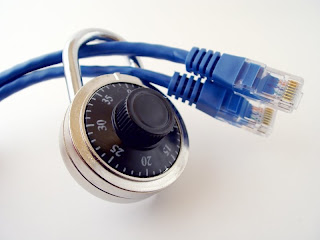Networking Tips
Computer networks are used to share the data and resources and for the communications. To get the optimized performance, data protection, maintenance, improved reliability and the security, every system administrator and network administrator should know the basic maintenance, troubleshooting and security techniques. Downtime is very dangerous for the critical network business applications and servers. In this article, you will learn some of the best networking tips and by using them you can get the optimized performance from your network.
- Security
A compute network is susceptible to the internet and external security related threats, which includes viruses, spyware, adware, Trojan horses, rootkits, web worms, intruders and hackers. To keep your network secure
Firewall: Install and configure a software/hardware firewall on your gateway and all other computers in your network. Firewall is used monitor the inbound and outbound traffic and block the unauthorized access and hackers’ attacks.
Antivirus: Install antivirus software such as Norton Antivirus, Trend Micro Office Scan, Panda Antivirus or McAfee and regularly scan your computer with an antivirus program.
Anti spyware: Install and configure an up-to-dated anti spyware software in your network.
Updated Operating System: Update your Windows based operating systems with the latest service packs, hot fixes and security patches.
Browser Security: Raise the level of security of your web browsers.
- Connectivity
Computer networking sometimes considered to be complex and seems to hard to troubleshoot. The connectivity problems occur in the computer network due to the devices conflicts, outdated LAN card’s driver, faulty hardware, faulty cable or connectors and misconfigurations. To troubleshoot the connectivity related issues, you need to perform the following tasks.
- Check the LEDs of your LAN card.
- Update the driver of your LAN card.
- Scan your computer for the viruses and spyware.
- Check the UTP/STP cable, the both end of the cable should be properly inserted i.e. one end in the LAN card and one end in the hub/switch or router.
- Check the configurations of the LAN card.
- PING the destination computer and check the status.
- If your problem is still not resolved, replace the LAN card and reconfigure it.
- Maintenance
Computer network availability and security is very critical for the businesses. Maintenance include the domain setup, dealing with the internal and external security threats, assigning IP addresses to the computes, enabling/disabling network services like DHCP, FTP SMTP, SNMP, taking data backup, adding/removing users, troubleshooting the software/hardware, configuring the firewall and implementing the security in the overall IT infrastructure. To perform the maintenance related tasks in your compute network, you need the perfect tools.
- Troubleshooting
You can troubleshoot the computer network related problems by using the right tools and techniques. Be default, Windows based operating systems offer the TCP/IP stack, which contains the troubleshooting and diagnostic utilities such as PING, IPCONFIG, Hostname, ARP, Telnet, NSLOOKUP, Tracert and many others. Pinging a network computer is the first troubleshooting step as it checks the connectivity with the destination computer. Additionally, you can use the other troubleshooting tools such as Ethereal, IP Sniffer, LanGuard, Packeteer and many others. These tools help to diagnose the cause of the problem and troubleshoot them.
- Performance
To get the optimized performance from your computer network, you need to perform the following actions on every computer of your network.
- Use System Tools
- Delete Unnecessary Files
- Update Device Drivers
- Update BIOS
- Uninstall Unused Programs
- Update Operating System
- Wireless Networking Security Tips
The following tips are very helpful in securing your wireless computer network.
- Change the Default SSID
Change the Default Administrator’s password - Disable SSID broadcast.
- Enable Mac Address Filtering
- Assign Static IP address to the Network devices and computers.
- Turn on and configure the firewall on every computer in your network.
- Enable IPSec, SSL, Encryption, WPA and WPE according to your security requirements.
 INTRODUCTION TO NETWORK
INTRODUCTION TO NETWORK


